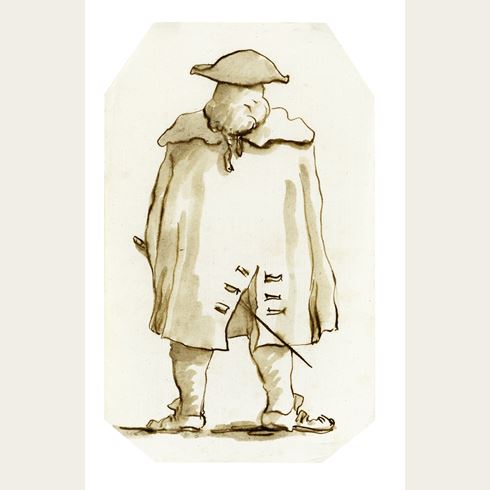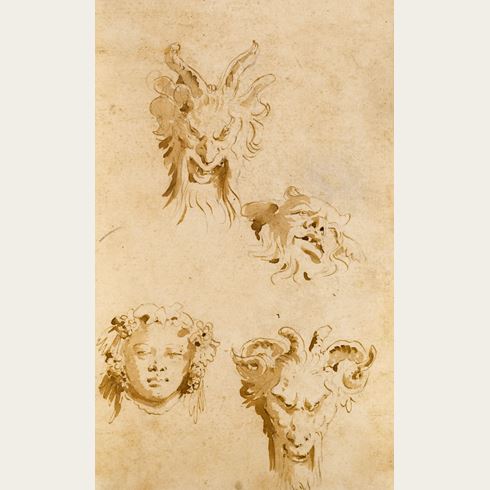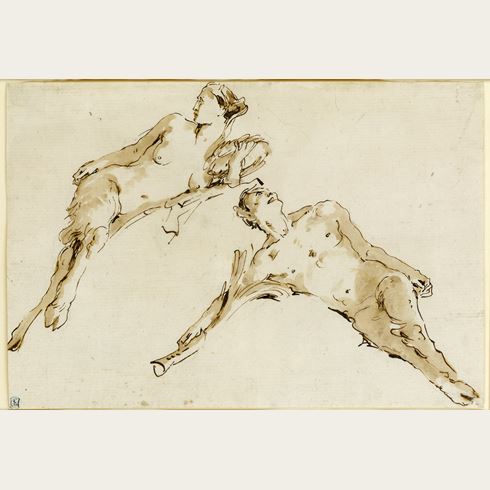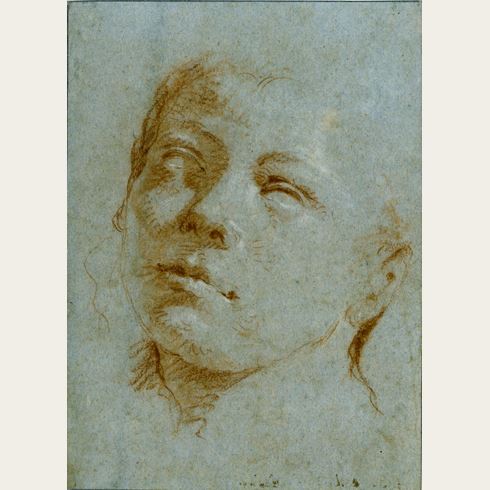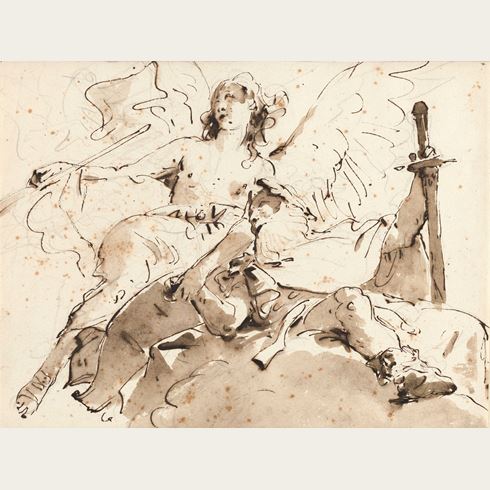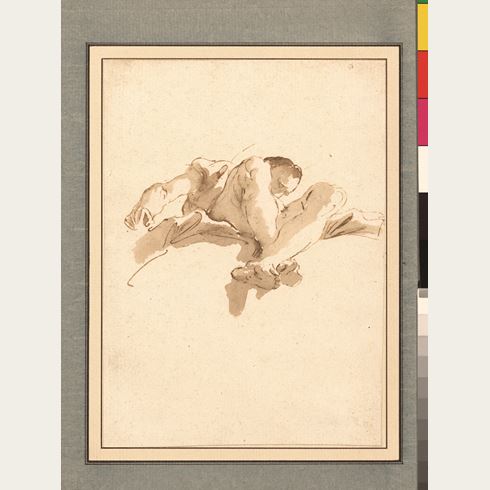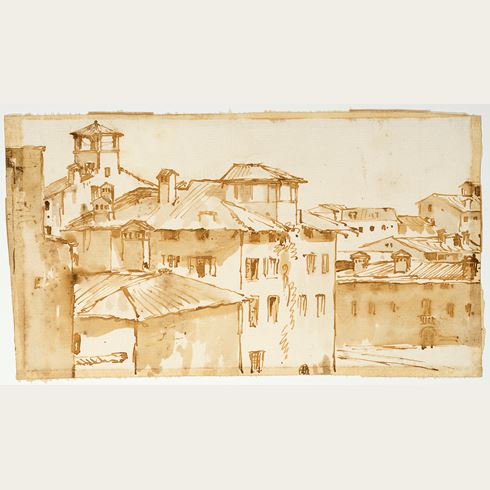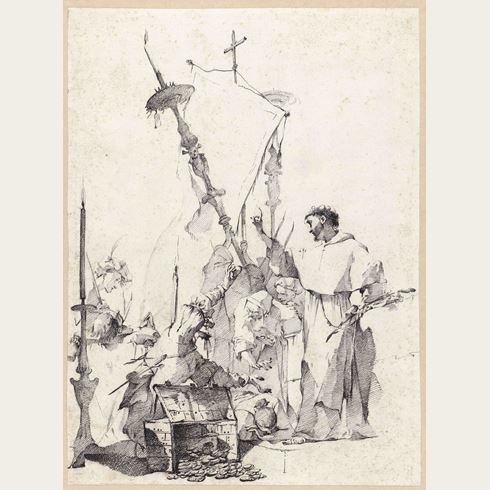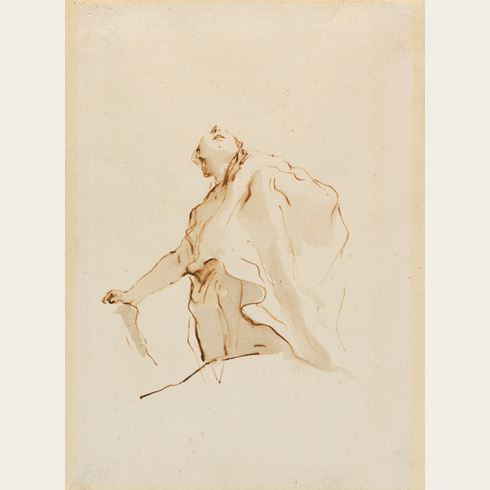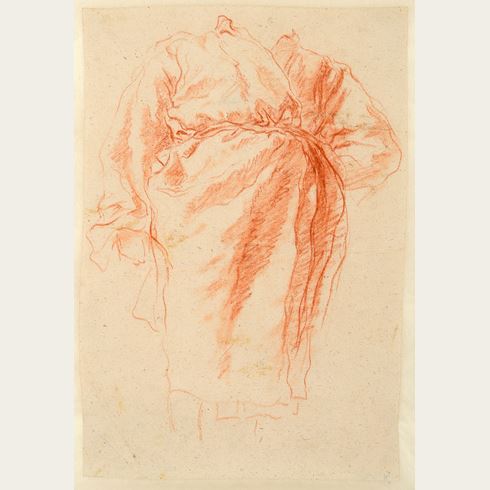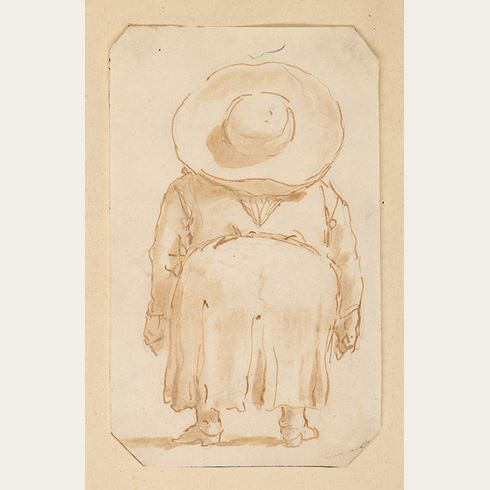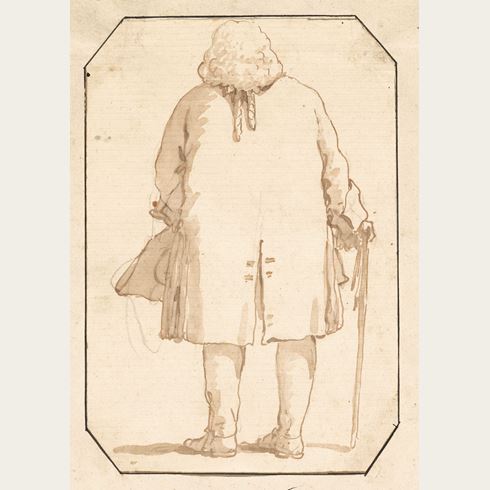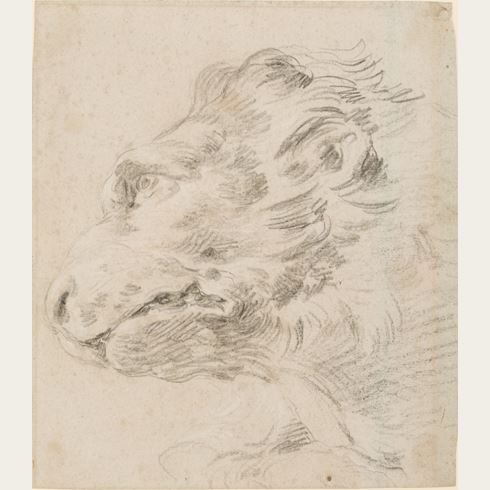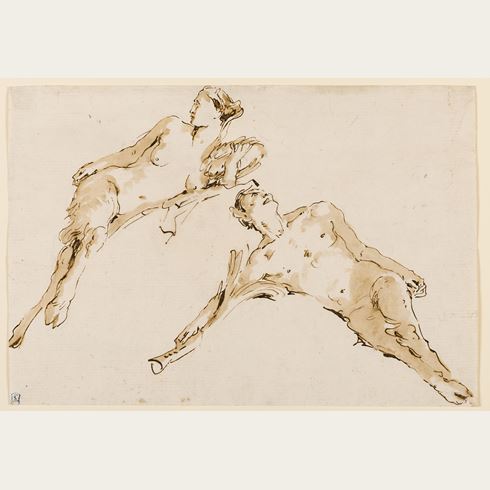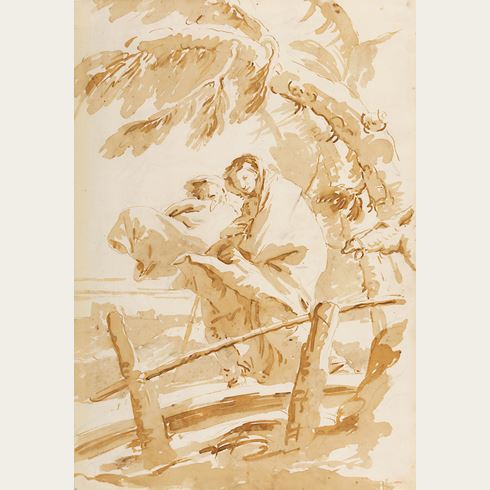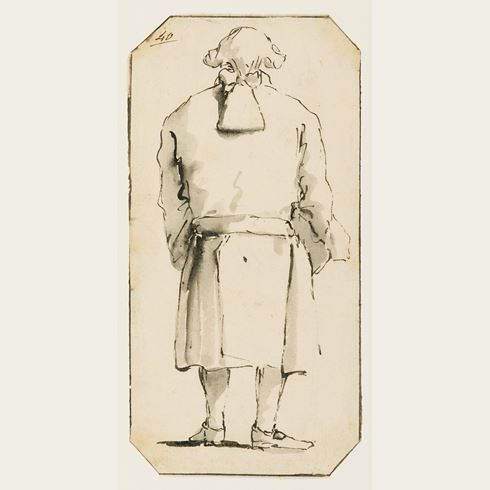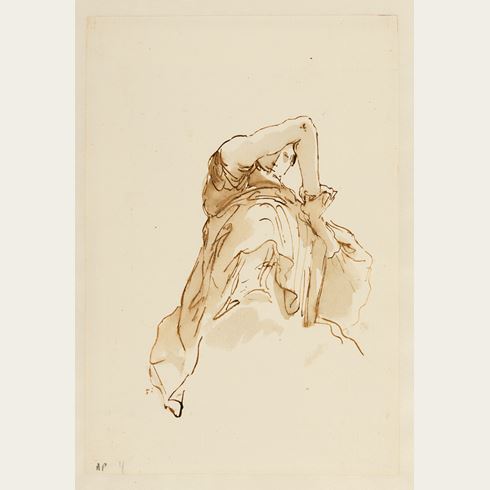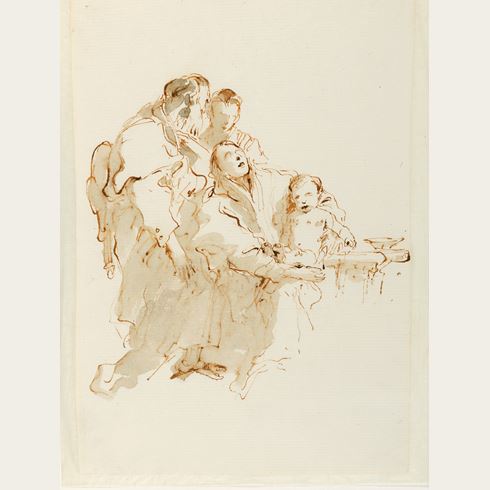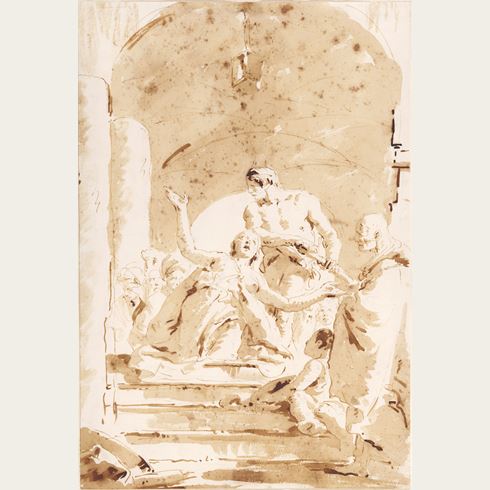Giovanni Battista TIEPOLO
(Venice 1696 - Madrid 1770)
A Centaur Carrying off a Female Faun
Signed Dom.o Tiepolo f. at the lower centre and numbered 104 at the upper left.
193 x 274 mm. (7 5/8 x 10 3/4 in.)
Domenico’s interest in the theme of centaurs, satyrs and fauns is manifest in both his paintings and drawings throughout much of his career, from the 1750s through to the 1790s. The theme culminates in the artist’s monochrome fresco decoration of two rooms – the Camera dei Satiri, begun in 1759 but completed in 1771, and the Camerino dei Centauri, painted twenty years later, in 1791 - in the Tiepolo family villa at Zianigo, near Mirano, north of Padua. The detached frescoes from Zianigo are today in the collection of the Museo del Settecento Veneziano at the Ca’ Rezzonico in Venice.
While a handful of the drawings of centaurs and satyrs in this series can be related to the Zianigo frescoes, most appear to have been made as autonomous works, as is indeed true of much of the artist’s drawn oeuvre. As Byam Shaw notes, ‘These drawings are not sketches but works of art in their own right, homogenous in style...pictorially composed and finished.’ He has further suggested that Domenico’s centaur and satyr drawings should be dated to between 1771 and 1791, the dates of the decoration of the two rooms in the villa at Zianigo.
The largest proportion of Domenico Tiepolo’s drawings of centaurs, fauns and satyrs, numbering about thirty sheets, depict centaurs abducting nymphs or female fauns. Jean Cailleux has identified several of these drawings as depicting variations on the theme of Nessus and Dejanira, a subject taken from Greek mythology. (Dejanira, the wife of Hercules, was abducted by the centaur Nessus, who was later killed by Hercules with a poisoned arrow.) As Adelheid Gealt has noted, ‘Domenico, true to his era, chose to explore the lusty side of the centaur’s nature...He loved the action abductions provided, and, though never repeating himself, he considered abductions over and over again, indulging his fascination with theme and variation in scenes of animal passion, but including enough drama that the viewer can perceive a story embedded in each drawing.’ Similar depictions of centaurs abducting women appear in Domenico’s monochrome frieze decorations in fresco in the Palazzo Contarini dal Zaffo in Venice, painted in 1784, and in his frescoes for the Villa Tiepolo at Zianigo, now at the Ca’ Rezzonico in Venice.
A closely comparable drawing by Domenico Tiepolo of this subject is in the Metropolitan Museum of Art in New York, while other similar drawings are in the collections of the National Gallery of Victoria in Melbourne and the Ecole des Beaux-Arts in Paris. Another drawing of this subject in the Metropolitan Museum of Art is very close in composition to the present sheet, but with the satyress replaced by a nymph, as is also seen in a drawing of The Centaur and the Nymph from the late series of Punchinello drawings by the artist.
The present sheet was one of several 18th century drawings acquired, in the early 1950s, from the Galerie Cailleux in Paris by French stage and film actress Josette Day Solvay (1914-1978). Josette Day began her career at the age of five, and appeared in numerous French films of the 1930s and 1940s. Her most famous performance was the starring role, opposite Jean Marais, in Jean Cocteau’s La Belle et la Bête (Beauty and the Beast), released in 1946. She ended her successful career in 1950, however, at the age of thirty-six, when she married the wealthy Belgian businessman Maurice Solvay.
The leading painter in Venice for much of his career, Giambattista Tiepolo was also undoubtedly one of the finest Italian draughtsmen of the 18th century. That his drawings were greatly admired in his lifetime is confirmed by contemporary accounts; indeed, as early as 1732 the writer Vincenzo da Canal remarked that ‘engravers and copyists are eager to copy his works, to glean his inventions and extraordinary ideas; his drawings are already so highly esteemed that books of them are sent to the most distant countries’. From the late 1730’s until his departure for Spain in 1762, Tiepolo enjoyed his most productive period as a draughtsman, creating a large number of vibrant pen and wash studies that are among the archetypal drawings of the Venetian Settecento. As one recent scholar has commented, ‘From the start of his career [Tiepolo] had enjoyed drawing as an additional means of expression, with equally original results. He did not draw simply to make an immediate note of his ideas, nor to make an initial sketch for a painting or to study details; he drew to give the freest, most complete expression to his genius. His drawings can be considered as an autonomous artistic genre; they constitute an enormous part of his work, giving expression to a quite extraordinary excursion of the imagination; in this respect, Tiepolo’s graphic work can be compared only with that of Rembrandt.’
Tiepolo’s drawings include compositional studies for paintings and prints, drawings of heads, figure studies for large-scale decorations, landscapes and caricatures, as well as several series of drawings on such themes as the Holy Family. Many of these drawings were bound into albums by theme or subject, and retained by the artist in his studio as a stock of motifs and ideas for use in his own work, or that of his sons and assistants.
Provenance
Literature





